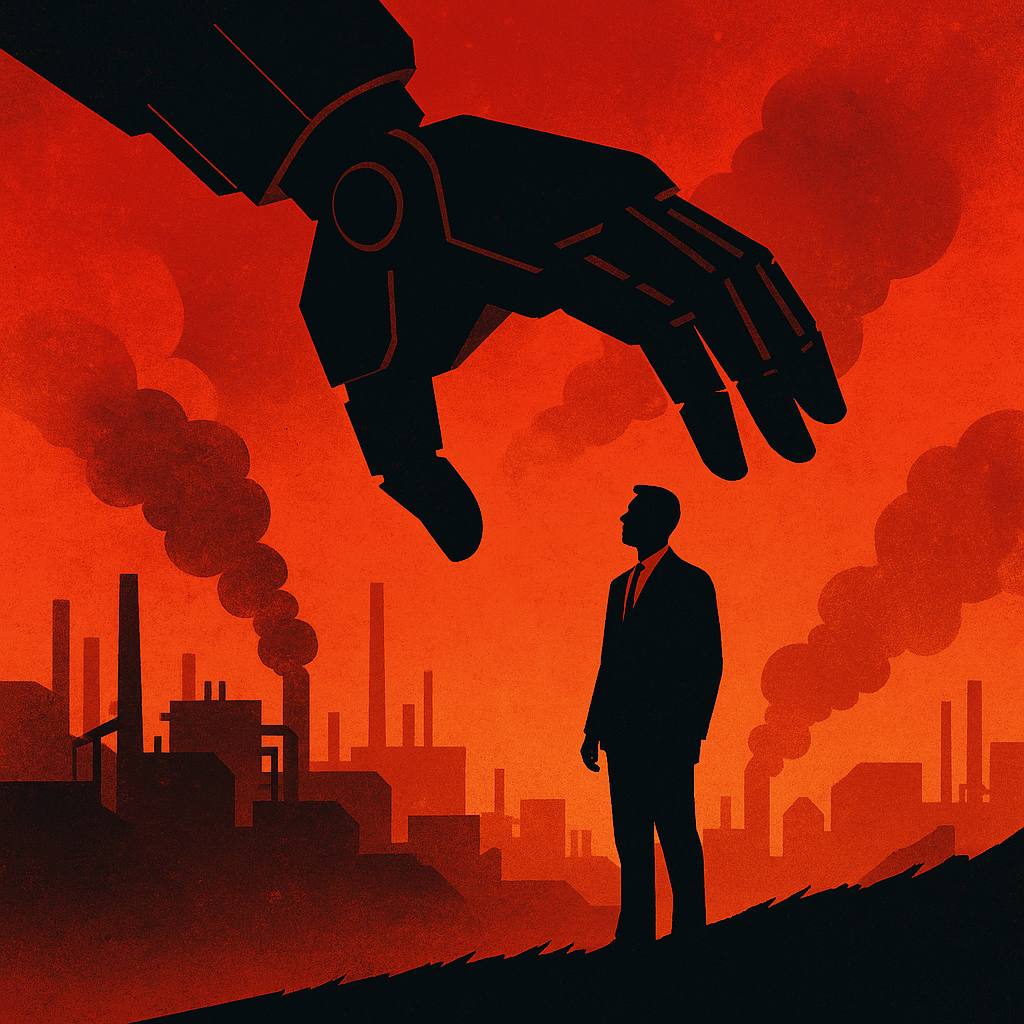The elites and their corporations see labor as nothing more than a cost to be eliminated…
History shows that every major leap in automation—from the factory line to outsourcing—has been sold as “progress.” Artificial intelligence is simply the most powerful weapon yet in that long war against workers.
Today it begins quietly. Coders find themselves replaced by autocomplete algorithms that can generate thousands of lines in seconds. Writers, designers, and customer service agents discover that chatbots and content engines are cheaper and faster. These are just the first waves. Research estimates that nearly 92 million jobs could be erased by 2030 as AI spreads through the economy.
Source: Forbes: Millions of Jobs Gone, Who Will AI Erase First?
But the real shift comes when AI merges with robotics. Machines that can think and move will not only make cars, but they will also repair them. They will not only assemble buildings, they will inspect and manage them. Over a 15- to 20-year horizon, almost no sector of labor is untouchable. A Brookings study warns that AI adoption will increase income inequality and squeeze the very middle-class backbone of the American economy.
Source: Brookings
The question then becomes simple:
How will everyday people make a living, when machines do it all?
the answer Big Business doesn’t want to discuss is that they don’t care. If they own the robots, the platforms, and the data, then they own the future economy. The top 1% become the landlords of all human survival. Everyone else rents life from them.
An IMF analysis admits the outcomes are uncertain, but the trend lines are clear. If labor income shrinks while capital returns surge, ownership—not work—becomes the only path to wealth. Without aggressive intervention, the future looks like a digital feudalism: a handful of corporations and their shareholders hold everything, while the rest of society fights for scraps.
Source: IMF.org
Small and Medium Businesses: Forced to Adopt or Die
For small and medium businesses, AI is not optional. It’s survival.
The giants of industry—Amazon, Google, Microsoft—are deploying AI to cut costs, crush competitors, and dominate markets. The ripple effect is brutal: if an SMB refuses to adopt AI, it instantly falls behind. Customer expectations rise, productivity benchmarks shift, and competitors with AI efficiency squeeze margins to nothing.
A Deloitte survey found that 77% of SMB leaders believe adopting AI is critical to staying competitive in the next five years.
Source: Deloitte.com
Another McKinsey study confirms that early adopters of AI in smaller firms see cost reductions of 10–20%—the kind of margin that can mean the difference between thriving and shutting down.
Source: McKinsey.com
But the story isn’t empowerment. It’s coercion. These businesses are being forced into AI arms races they didn’t ask for, often relying on the very same Big Tech platforms they’re supposed to be competing against. Every AI dollar they spend flows back into the pockets of the elite. Instead of leveling the playing field, it entrenches dependence.
For SMB owners, the dream of independence may soon vanish. They must either adopt AI just to keep up, or risk extinction in a market increasingly tilted toward monopolies. Big Business wins either way.
SMBs: Start Now to Hold the Wolves at Bay
Waiting is not an option. Small and medium businesses must start adopting AI today—not next year, not when it’s comfortable. Early adoption creates a buffer, a way to hold the wolves at bay. Every process streamlined, every customer interaction enhanced, every cost trimmed with AI gives an SMB more time to survive in an economy designed to push them out.
This isn’t about chasing shiny tools. It’s about defending your market share before giants and competitors close in. The SMBs that build AI literacy and experiment now will be the ones with leverage later. The ones who hesitate will have their margins eaten alive.
Workers: Use AI or Become Obsolete
For workers, the message is brutal: adopt AI or be replaced by it.
This is not optional. The data is clear—AI is already erasing traditional tasks in programming, content creation, and office administration. A Stanford–MIT study found that workers who used AI saw productivity rise by as much as 14% compared to peers who didn’t. That productivity gap will decide who keeps their job and who gets cut.
Source: https://hai.stanford.edu/news/assessing-the-real-impact-of-automation-on-jobs
But here’s the dark truth: adopting AI doesn’t guarantee security, it only delays replacement. Employers are incentivized to squeeze more output from fewer people. If you don’t learn to use AI, you are the first in line for automation. If you do, you may survive—but with fewer colleagues, higher expectations, and constant pressure to prove you’re worth more than the machine.
AI is no longer just a tool. It’s a filter. Those who master it will remain relevant; those who resist will be discarded. And even the “relevant” may be temporary placeholders until the next upgrade.
Conclusion: It’s Not Hopeless—But It Requires Action
The trajectory is clear: Big Business eliminates labor, SMBs are forced to play the AI game to survive, and workers must adopt AI just to stay relevant. All roads lead to consolidation of power in the hands of those who already control the platforms, data, and capital.
But this does not have to end in digital feudalism. If SMBs embrace AI early and smartly, they can carve out niches the giants overlook. If workers upskill relentlessly, they can remain relevant longer and shape how AI integrates into daily work. If society pushes for regulation, transparency, and fair redistribution, we can blunt the worst outcomes and spread the gains.
The wolves are at the door, but survival is not impossible. The choice is whether to act now—or be acted upon.
If you want to act now…
👉 Sign up today for our free AI consulting and strategy session and get a roadmap to protect your business, empower your workforce, and stay ahead of the machines—not behind them.


